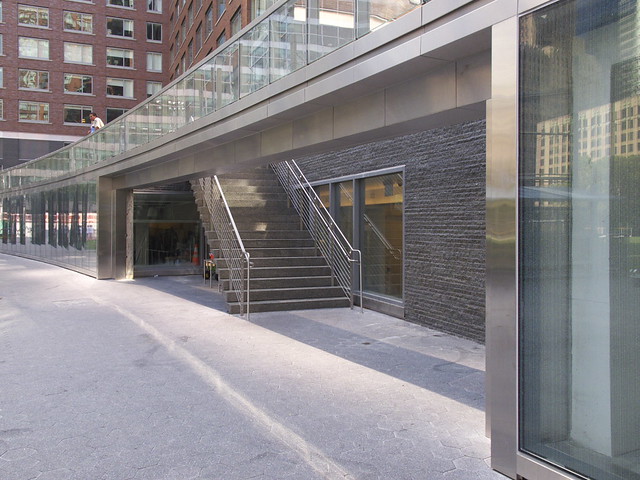
[Looking south at halfway point along curved wall | Photographs by John Hill]
Yesterday I found myself in Battery Park City (BPC), so I stopped by the Community Center designed by hanrahan Meyers architects (hMa) to see how construction was going. It appears that the Digital Water Pavilion (DWP), as the architects call it, is just about done.
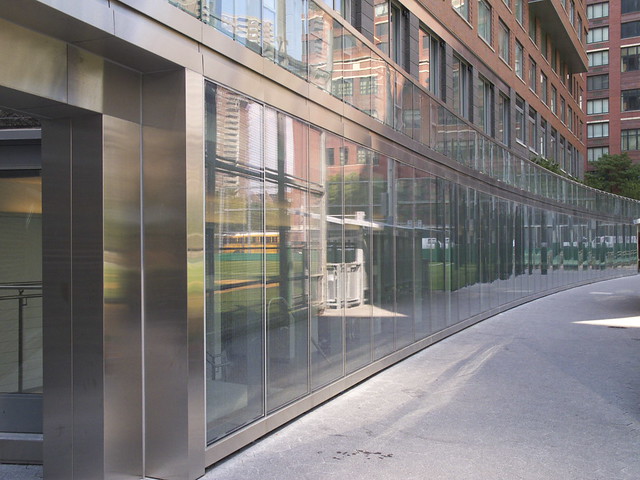
[Looking north at halfway point along curved wall]
The low, curving pavilion sits in the North Neighborhood beneath two residential towers; together they comprise the last pieces in the whole BPC development. Facing east, overlooking a couple ball fields, is the curving wall -- 550 feet (167 meters) long. Curving walls are nothing new in BPC, but most of them (Riverhouse, Solaire, Visionaire, Ritz Carlton) derive their shape from the north-south roads that traverse the development (map for reference). The DWP's wall is more unprecedented, serving to shape the outdoor space, while also connecting points on the north and south (left and right in the below plan, respectively) through its gentle curve, rather than a straight line.

[Top: Digital Water Pavilion plan (source) | Bottom: Chiba Golf Club plan (source)]
I'm a huge fans of curves like this, and immediately the DWP reminds me of Morphosis's unbuilt Chiba Golf Club, shown above for reference. I don't think hMa were necessarily influenced by this project, but the way that each plan uses a curve to embrace an expansive landscape points to the potential in wide, sweeping arcs. Just think of the colonnades of St. Peter's Square as a distant precedent.
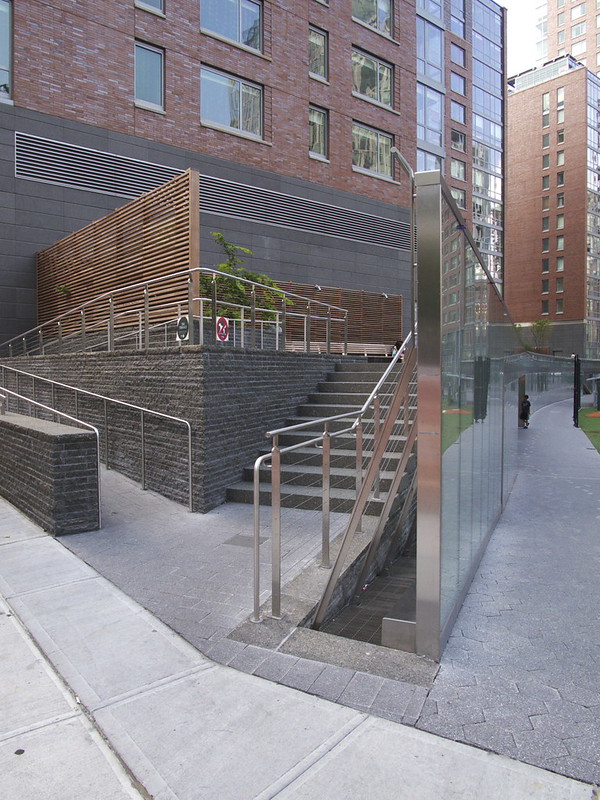
[The southernmost end of the 550-foot-long glass wall]
As mentioned, the wall aligns with something beyond (behind us in the photo), namely the public arcade between Goldman Sachs and the Conrad Hotel. This alignment, and the way that hMa's design creates lower and upper walkways, provides north-south pedestrian paths that link with other parts of BPC. One block further south, the arcade designed by Preston Scott Cohen aligns with the interior arcade of the World Financial Center.
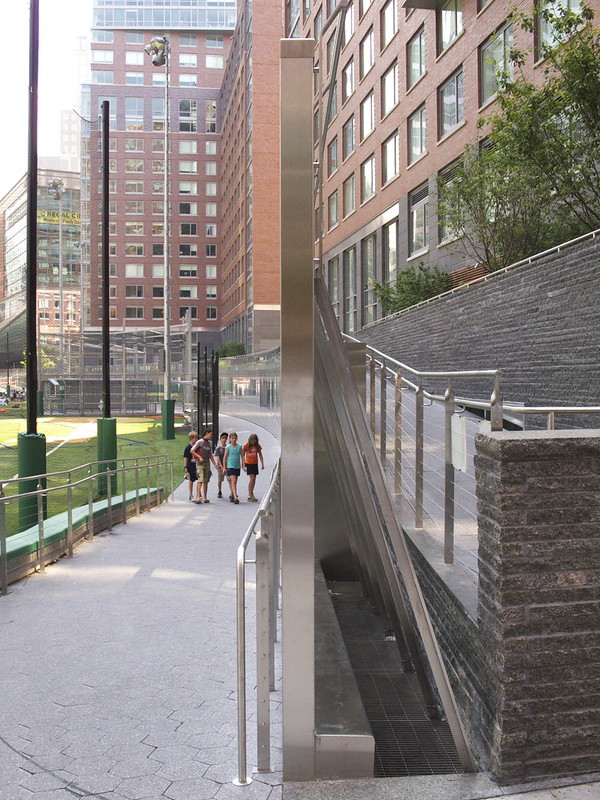
[The northernmost end of the 550-foot-long glass wall]
The north end does not align with something like the public arcade, but if one were to head right in the photo a few steps away is Teardrop Park, a rugged landscape between a number of earlier Northern Neighborhood towers. The top and previous photos show an interesting detail: the glass wall detaches itself from the enclosed spaces at the ends, so it is propped up by steel bracing.
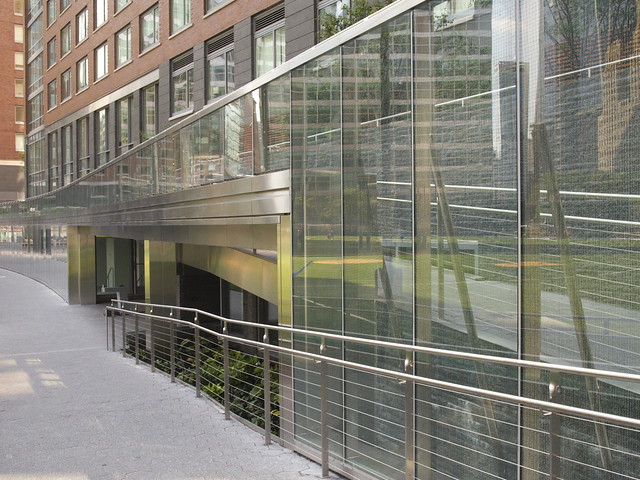
[The north garden tucked underneath the ramp to the upper level]
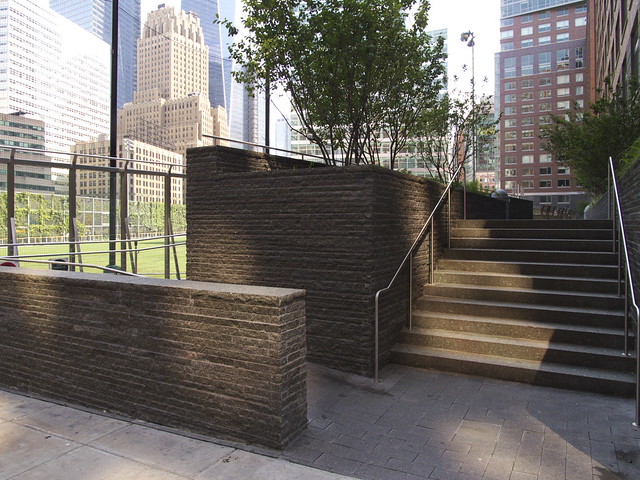
[Access to the upper walkway on the north end]
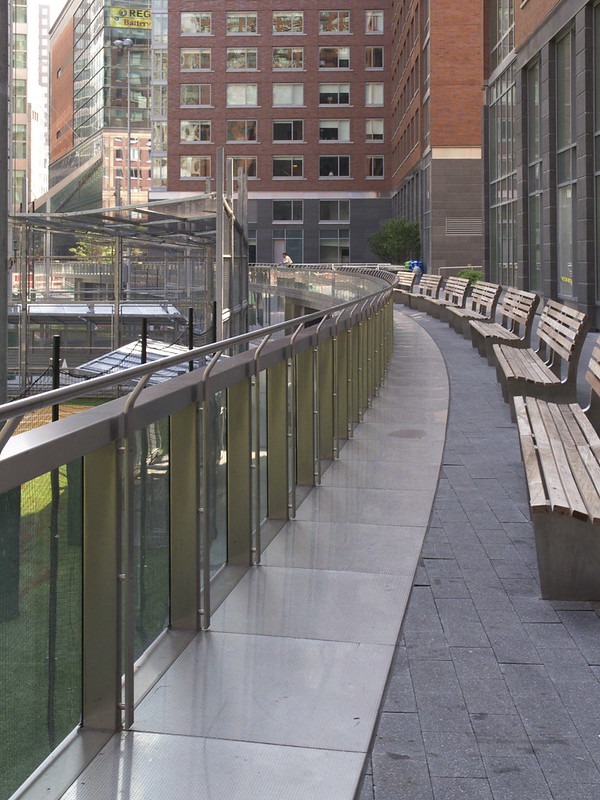
Ultimately the curve's relationship to the ball fields comes to the fore. On the upper level (photo above), the benches face them and become a place for parents and fans to watch soccer and baseball. Downstairs, the fields constrict the space next to the "water wall" (so called because it is "a patterned interpretation of a composition, ‘WATER’, commissioned from New York City composer Michael Schumacher") through the necessary protective nets and the cages around home plate.
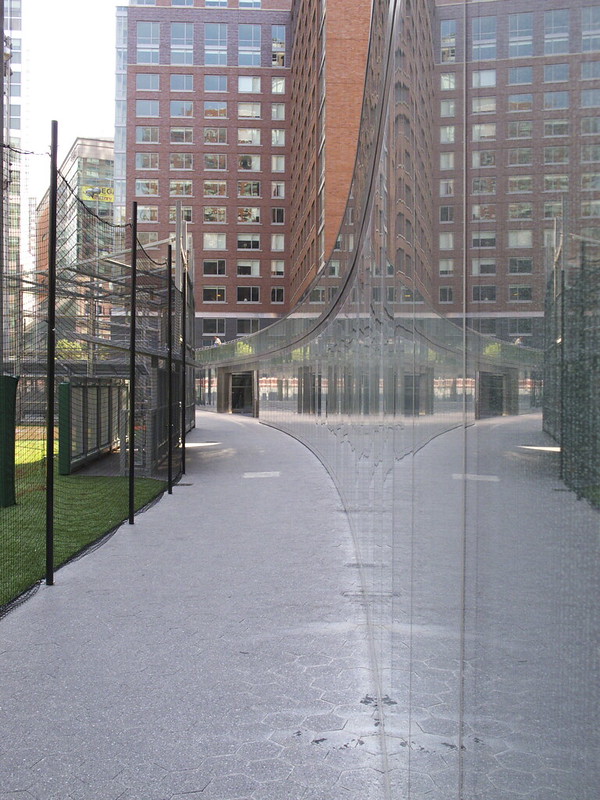
[Looking south from near north courtyard]